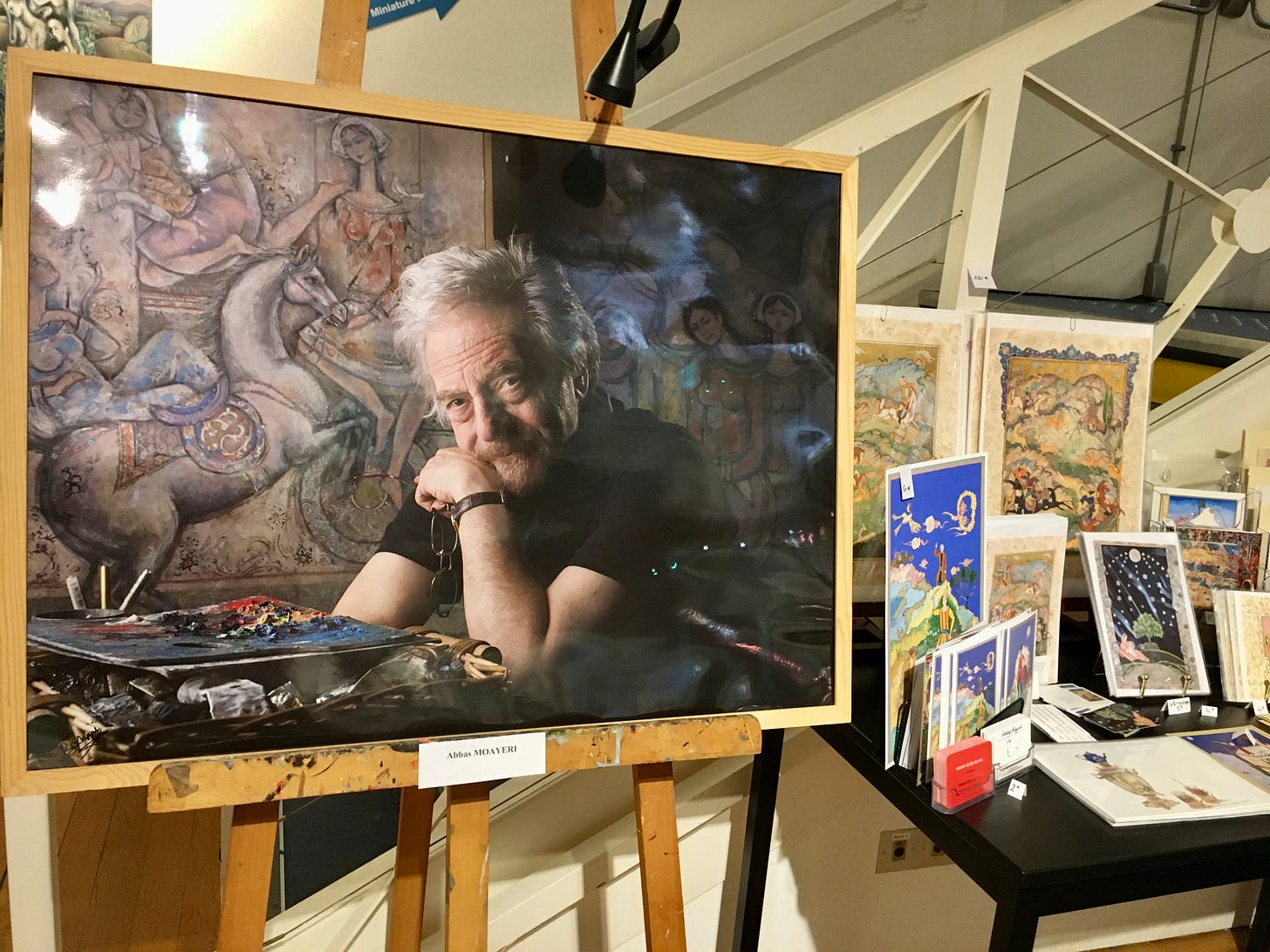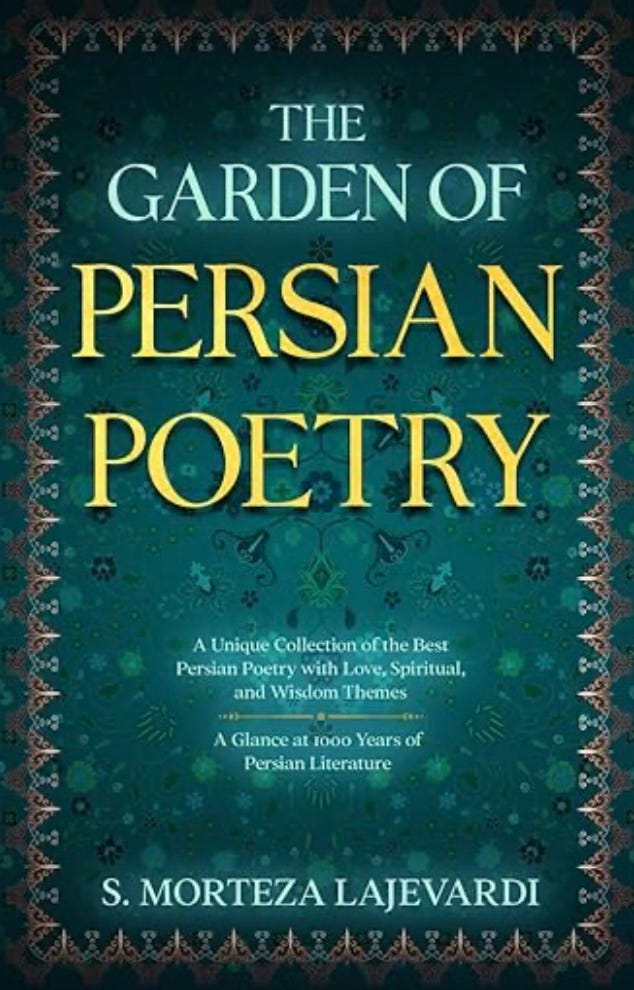Why the World Still Needs Persian Poetry
… a masterclass in metaphor, rhythm, and emotional clarity …
If you’ve never read a line of Persian poetry, let me tempt you with these words about love:
“My heart is a buyer of love, the boomer of love Bazaar” – Baba Tahir (1000–1085).
And this, written nearly 900 years later:
“Look for someone who looks for you! If not, look for yourself!” – Muhammad Iqbal (1877–1938).
These lines span centuries but have the same sense of hope and resilience.
I recently read Seyed-Morteza Lajevardi’s 2023 poetry collection, The Garden of Persian Poetry, a beautifully curated anthology that offers what the author calls “a glance” at over 1,000 years of Persian literature. But this isn’t a mere glance; it’s a poetic world that shaped not just Eastern verse, but a global understanding of beauty, love, mysticism, and language itself.
Lajevardi brings together 65 Persian poets, beginning with Roudaki in 880 AD and ending in the early 21st century. Classic names like Rumi, Hafiz, Khayyam, Attar, and Baba Tahir are joined by lesser known but equally resonant poets. The chronological format allows the reader to sense both continuity and evolution, making this collection a poetic lineage that traces its roots while still introducing new inflections.
What makes this collection extraordinary is the quality of the translations. Lajevardi doesn't just translate words; he transmits feelings. In doing so, he invites readers into a culture where poetry has long been central to life, where it was recited in gardens and debated in teahouses and palaces alike.
Persian poetry has historically been a vehicle for philosophy, spiritual insight, political dissent, and, above all, longing. To read Hafiz or Rumi is to read yourself back into a state of awe. Their verses speak to exile, homecoming, intoxication (sometimes literal, often spiritual), and the contradictions of being human.
The poets remind us that poetry isn’t ornamental; it’s essential. And they remind us that language can be a bridge, not just between people, but across centuries. In a time where the world feels fragmented, Persian poetry reminds us that love has been burning at the core of language for over a millennium, and that the right words, in any age, still have the power to heal, provoke, enchant, and transform.
The Garden of Persian Poetry is more than an anthology. It’s a reminder that some things, like the hunger for beauty and belonging, are older than nations, deeper than divisions, and forever worth reading.
I’ve read many Persian poets individually and I found immense joy in seeing them gathered thoughtfully in one collection. If you’re a writer, this collection is a masterclass in metaphor, rhythm, and emotional clarity. If you’re a reader, it’s a garden of delight.
*****
The paintings here are the works of Franco-Iranian painter, miniaturist, and sculptor Abbas Moayeri (1939-2020) from the January 2024 Paris exhibition “Persian Miniature” (Miniature Persane). From Tehran, Iran, he moved to Paris in 1984 when he accepted a position in the Association for the Development of Cultural Animation.
Can’t see the whole article? Want to view the original article? Want to view more articles? Go to Martina’s Substack: The Stories in You and Me
MY PARIS WEBSITE AND ALL THINGS PARISIAN
Photographer: Martina Nicolls
PIP DECKS, the fun and engaging how-to guides for business.










